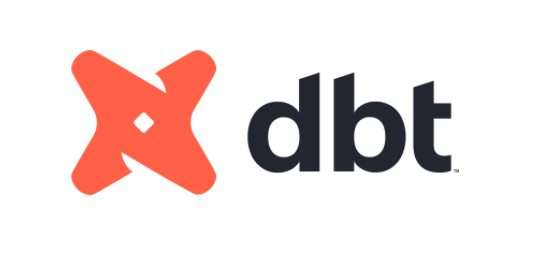
Prerequisites
This guide shows how to set up a local installation of DBT Core. This guide uses Python’spip package manager, but you can use the following ways to install DBT: Homebrew, Docker, and from source.
You will need the following:
- A GitHub account.
- Python 3.8+.
Quickstart
This guide shows you how to set up DBT with Firebolt and run your first DBT model.Setup DBT Core
- Create a new Python virtual environment, as shown in the following script example:
- Activate your
venv, as shown in the following script example: - Install Firebolt’s adapter for DBT, as shown in the following script example:
- (Optional) Check that both dbt packages are installed:
This command should return
dbt-coreanddbt-fireboltand their respective versions.
Setup connection to Firebolt
DBT uses aprofiles.yml file to store the connection information. This file generally lives outside of your dbt project to avoid checking in sensitive information in to version control.
The usual place to create this file on Mac and Linux is ~/.dbt/profiles.yml.
-
Open
~/.dbt/profiles.ymlwith your preferred text editor. -
Paste the following sample configuration:
-
Replace the placeholders with your account’s information.
<client-id>and<client-secret>are key and secret of your service account. If you don’t have one, follow the steps in the Manage service accounts page to learn how to set one up.<database-name>and<engine-name>are the Firebolt’s database and engine that you want your queries to run.<account-name>is a Firebolt account that you’re connected to. Learn more here.<table-prefix>is a prefix prepended to your table names. Since Firebolt does not support custom schemas, this prefix serves as a workaround to prevent table name conflicts during concurrent development.
Setup Jaffle Shop, a sample dbt project
jaffle_shop is a fictional ecommerce store. This dbt project transforms raw data from an app database into a customers and orders model ready for analytics. This version is designed to showcase Firebolt’s integration with DBT.
-
Clone
jaffle-shop-fireboltrepository and change to the newly created directory, as follows: -
Ensure your profile is setup correctly:
If you’re seeing an error here, check that your
profiles.ymlis set up correctly, is in the right directory on your system, and that the engine. is running. Also check that you’re still indbt-envvirtual Python environment that we’ve setup earlier and that both packages are present. -
Install dependent packages:
-
Run the external table model. If your database is not in
us-east-1AWS region then refer to the Readme on how to copy the files. -
Load sample CSV in your database:
-
Run the models:
customers and orders tables in your database, created using dbt models. From here you can explore more of DBT’s capabilities, including incremental models, documentation generation, and more, by following the official guides in the section below.
External table loading strategy
In the previous Jaffle Shop example we used a public Amazon S3 bucket to load data. If your bucket contains sensitive data, you will want to restrict access. Follow our guide to set up AWS authentication using an ID and secret key. In yourdbt_project.yml, you can specify the credentials for your external table in fields aws_key_id and aws_secret_key, as shown in the following code example:
dbt_project.yml file. Every external table must contain the fields: url, type, and object_pattern. The Firebolt external table specification requires fewer fields than those specified in the dbt documentation.
”Copy” loading strategy
You can also use COPY FROM to load data from Amazon S3 into Firebolt. It has a simple syntax and doesn’t require an exact match with your source data.COPY_FROM does not create an intermediate table and writes your data straight into Firebolt so you can start working with it right away.
The copy syntax in dbt closely adheres to the syntax in Firebolt’s COPY_FROM.
To use COPY FROM instead of creating an external table, set strategy: copy in your external source definition. For backwards compatibility, if no strategy is specified, the external table strategy is used by default.
csv_options are indented. For detailed descriptions of these options and their allowed values, refer to the parameter specification.
